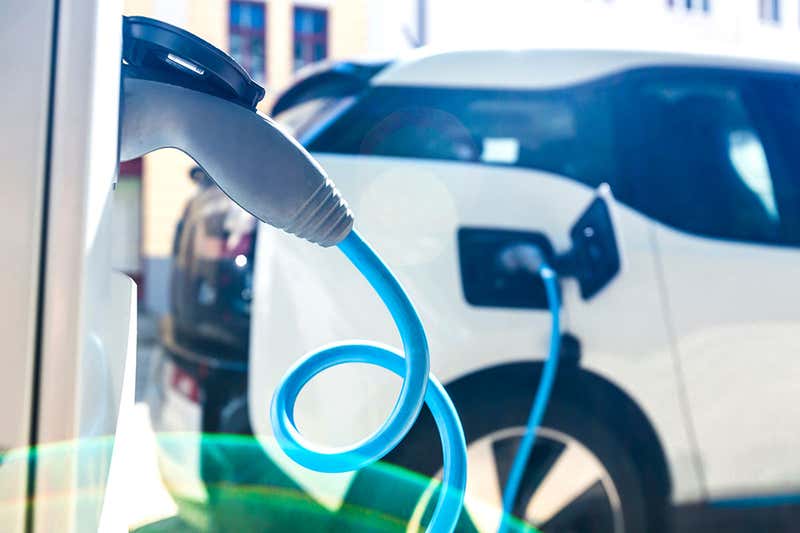Read The Full Article: Reuters
FRANKFURT (Reuters) – Carmakers are under pressure in Europe to sell more electric cars or face huge fines for breaching new emissions rules aimed at tackling global warming.
The European Union set automakers a target to cut carbon dioxide emissions by 40% between 2007 and 2021, but they are collectively far short of this goal due to the popularity among drivers of heavy, polluting models such as SUVs.
EU lawmakers also agreed in December 2018 a further cut in CO2 emissions from cars of 37.5% by 2030 compared with 2021 levels – raising the bar just as the fines from the previous target are about to kick in.
WHY HAVEN’T ELECTRIC CARS GAINED TRACTION SO FAR?
Battery-driven cars take longer to recharge compared with the roughly three minutes needed fill up a petrol or diesel tank, although the exact time depends on the type of charger and the vehicle. Many countries have also been slow to roll-out charging points.
According to Volkswagen’s (VOWG_p.DE) subsidiary Electrify America, a 240-volt charger can add 20 to 30 miles of driving range in an hour, depending on the capability of the vehicle, and a direct current fast charger takes between five and 30 minutes to add 100 miles of range.
WHO IS FORCING CARMAKERS TO SELL LOW EMISSION CARS?
EU lawmakers have set a general target that emissions from all new cars sold by an automaker should on average not exceed 95 grams of CO2 per kilometer by 2021. However, the target for individuals carmakers varies because it takes into account the starting weight of each companies’ fleet in the base year of 2007.
Manufacturers with fewer than 300,000 new passenger car registrations in a given year will also be able to apply for exemptions, according to the European Commission’s website here
WHAT IS THE PENALTY FOR NON-COMPLIANCE?
Manufacturers will face a penalty of 95 euros for each gram of excess CO2 they emit compared with their individual targets.
Evercore ISI analysts estimate carmakers face up to a combined 33 billion euros ($37 billion) in fines based on reported 2018 CO2 emissions levels.
Analysts at PA Consulting estimate fines for individual carmakers would have been as follows, based on 2018 fleet emissions. The actual penalties are likely to be lower as carmakers sought to sell more hybrid and electric cars in 2019.
WHAT INVESTMENTS ARE REQUIRED?
Fitting more electric components will cost carmakers between 800 and 5,000 euros per vehicle to ensure compliance with 2021 targets, Evercore ISI say.
Mild hybrid systems – where electric motors are used to assist a combustion engine – give rise to an additional cost of between 800 and 1,200 euros per vehicle, while plug-in hybrids – where the electric motor can take over – add 2,000-5,000 euros.
Until now, the auto industry has relied on profits between 500 and 1,500 euros per vehicle in the mass market, and between 2,000 and 5,000 euros for a premium vehicle.
WHY HAS THE INDUSTRY BEEN SLOW TO EMBRACE ELECTRIC CARS?
Reasons include a lack of charging infrastructure, a threat to employment in the industry, and uncertainty over levels of customer demand.
Three quarters of all charging points in Europe are located in four countries that only cover 26% of the continent’s total area, the European Automobile Manufacturers’ Association (ACEA) says.
Out of the 144,000 charging points available across the EU, more than 26% are in the Netherlands, 19% in Germany, 17% in France and 13% in the United Kingdom, according to ACEA’s website.
Germany’s auto industry association VDA has said a ban on combustion engine vehicles in 2030 would threaten more than 600,000 German industrial jobs, of which 436,000 are at car companies and their suppliers.
Jobs will disappear because it takes less time to build an electric car than a conventional one. A combustion engined car has 1,400 components in the motor, exhaust system and transmission. An electric car’s battery and motor has only 200 components, according to analysts at ING.
In Europe, there are about 126 plants making combustion engines, employing 112,000 people. The largest is Volkswagen’s factory in Kassel, Germany. A shift to plug-in hybrid cars would help to protect jobs since they take 50% more time, or up to 9 hours longer, to make than cars with only a combustion engine. But pure electric cars are much less complex. For example, while a Volkswagen Golf has around 50 ball bearings, the electric Chevrolet Bolt has only six.
SUPPLY BOTTLENECKS
The drive to sell more electric vehicles, which has increased the industry’s reliance on Asian battery cell makers, has led to supply bottlenecks even before measures to contain the coronavirus caused further supply-chain disruptions.
Audi has had to slow down production of electric cars at its plant in Brussels due to a battery cell shortage. Volvo and Volkswagen may also face challenges after battery supplier Samsung SDI (006400.KS) issued a profit warning due to the coronavirus outbreak.
“We have flown parts in suitcases from China to the UK,” Jaguar Land Rover (JLR) Chief Executive Ralf Speth said last month, as Britain’s biggest carmaker warned of the impact of the virus on supply chains.
LAUNCH PLANS
Volkswagen Group said in March 2019 it planned to launch almost 70 new electric models by 2028.
BMW (BMWG.DE) has said it plans to offer 25 electrified models by 2023, with more than half being fully electric, and expects their sales to rise on average by 30% a year until 2025.
Fiat Chrysler Automobiles (FCA) (FCHA.MI) plans to offer 12 electrified models by 2021, including both hybrid and full electric vehicles of all types.
Italy’s Ferrari (RACE.MI) has said it plans to have “a full hybrid range” by 2021 and wants 60% of its cars sold by 2022 to be hybrids, but will not release a fully electric model until after 2025.

